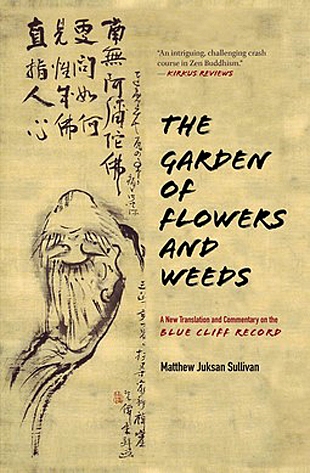A passage from Sullivan’s commentary for the Seventy-sixth Case:
“Danxia Tianran (739-824) stands out as one of the most compelling Zen Masters of the Tang dynasty. He studied with all the big names: Great Master Ma, National Teacher Huizhong, Layman Pang, Jingshan Faquin (a patriarch of the Oxhead school), and Shitou (the progenitor of the Soto school). Danxia is usually portrayed as a dharma heir of Shitou, but the truth is that he was too wild to be bound to anyone. There is a story that when he first visited Great Master Ma, he strode into the Sangha Hall, climbed onto the statue of Manjusri, and straddled its neck like a man riding a donkey. The onlookers were horrified, but when Great Master Ma entered to investigate the commotion, he took one look at Danxia and sighed, 'My natural disciple!' This is where Danxia got his dharma name Tianran ('natural').
“Another scene involving Danxia became one of the classic topics for Zen painting. He was wintering in a monastery in one of China’s northern provinces. The weather was cold and the firewood was depleted, so Danxia chucked the statue of the Buddha on the hearth. The proctor of the shrine was furious and asked what Danxia thought he was doing. Danxia replied, 'I’m cremating the Buddha to find his sacred relics.' The proctor said, 'How can a wooden Buddha give relics?' and Danxia shot back, 'If statues don’t give relics, let’s burn some more of them.' It is recorded that the proctor was so angry that his eyebrows fell off.”
